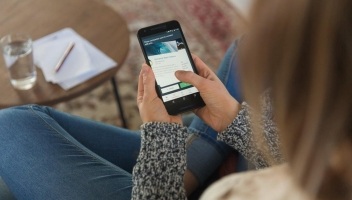
If you work in SaaS, chances are you’re familiar with the enablement gap that exists between the signing of a customer contract and their successful adoption. Since adoption is a key metric for successful onboarding, the priority is to close that gap quickly.
Many companies have created dedicated teams tasked with driving one-to-one touchpoints with customers and getting their teams up-to-speed and enthusiastic about using the product they just acquired. By helping customers take ownership of the tools, we can set a direct course for their first value moment via tech-touch or human-touch interactions.
While the onboarding specialists provide only one part of the full customer onboarding experience, we’re often a uniquely human interaction along the way. Therefore, it’s critical that we make the most of the opportunity to represent the product and bring it to life for the customer.
At UserTesting, the Customer Onboarding team has spent the past two years designing and iterating on its programming to increase successful product adoption. Today, we want to share the three best practices that we’ve learned along the way:
1. Strike while the iron’s hot
As onboarding facilitators, we often get to provide customers with their first impressions of the product. This is our chance to make the most of their enthusiasm and get users in the product early. Depending on how much of your product enablement is automated (in-product cues, tutorial videos, etc.), make the most of your human-to-human time by collaborating in the product and workshopping on real projects. Keep up the momentum by encouraging teams to try out the tailored use cases you’ve discussed.
2. Have everyone in the room (at just the right times)
Of course, we want everyone to love our product as much as we do, but some conversations are going to be more relevant to certain team members than others. Ensure value for your customers by inviting just the right people to the appropriate touchpoints. Design targeted workshops for your different user groups, including managers and execs. Adoption rises when everyone understands the role they play in the tool.
3. Make space for conversation, collaboration, and contrarians
If you want to facilitate engaging conversations, design your onboarding program for interaction and collaboration. Build working sessions and encourage the customer team to lead the way on their real-world projects. While video tutorials and help center articles are a necessary component for onboarding, discussing questions and concerns in-person will increase the likelihood of retention.
Empathy in onboarding leads to more successful adoption
Whether you work in a dedicated customer onboarding function or in a longer-term customer success role, you have the opportunity to leave a lasting, positive impression of your product by providing a thoughtful, targeted human touch for your customers.
Allow your marketing campaigns and smart product triggers to drive autonomy, but don’t forget the value of hands-on relationship-building in the early stages of customer onboarding. The connections you make with customers through the onboarding experience may be the difference between successful adoption and renewal or inactivity and customer churn.
Insights that drive innovation
Get our best human insight resources delivered right to your inbox every month. As a bonus, we'll send you our latest industry report: When business is human, insights drive innovation.
Sean Treiser is one of UserTesting’s Onboarding Specialists—helping to train customer teams across a variety of industries, shapes, and sizes in user research best practices. Outside of the office, you’ll find him riding bike trails, patronizing sushi bars, and attending just about every concert around Atlanta.






